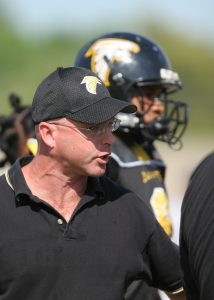Chapter 8: Communicating in Groups and Organizations
Learning Objectives
- Define small group communication.
- Explain the characteristics, functions, and types of small groups.
- Discuss advantages and disadvantages of small groups.
- Define organizational communication.
- Discuss the classical management, human relations, and human resources perspectives on organizations.
- Discuss internal and external communication in organizations.
- Compare and contrast different leadership styles.
- Identify and discuss task, relational, and individual member roles.
Most of the communication skills discussed in the preceding chapters are directed toward dyadic communication, meaning that they are applied in two-person interactions. While many of these skills can be transferred and used in contexts with more people, the complex nature of group and organizational interaction necessitates some adaptation and some additional skills. In this chapter, we will delve into small group communication, organizational communication, and the dynamics of leadership and membership in group and organizational contexts.
8.1 Small Group Communication
When you think of small groups, you probably think of the much dreaded “group assignment” that you’ve endured in high school and college. You are less likely to think of the numerous other groups to which you belong that bring more positive experiences, such as your family and friendship groups or shared-interest groups. Group communication scholars are so aware of this common negative sentiment toward group communication that they coined the term grouphate to describe it. Small groups, however, aren’t just entities meant to torture students; they have served a central purpose in human history and evolution. Groups make it easier for us to complete a wide variety of tasks; help us establish meaningful social bonds; and help us create, maintain, and change our sense of self (Hargie, 2011).

Small group communication refers to interactions among three or more people who are connected through a common purpose, mutual influence, and a shared identity. In this section, we will learn about the characteristics, types, and advantages and disadvantages of small groups.
Characteristics of Small Groups
Different groups have different characteristics, serve different purposes, and can lead to positive, neutral, or negative experiences. While our interpersonal relationships primarily focus on relationship building, small groups usually focus on some sort of task completion or goal accomplishment. A college learning community focused on math and science, a campaign team for a state senator, and a group of local organic farmers are examples of small groups that would all have a different size, structure, identity, and interaction pattern. Three defining characteristics of a small group are size, identity, and interdependence.
In terms of size, there is no set number for the ideal small group. But a small group requires a minimum of three people (because two people would be a pair or dyad). While the upper range of group size is contingent on the purpose of the group, when groups grow beyond fifteen-to-twenty members, it becomes difficult to consider them a small group. Small groups who add too many members increase the potential for group members to feel overwhelmed or disconnected.
Next, group members create a shared identity. Shared identity can be exhibited through group names, slogans, songs, handshakes, clothing, or other symbols. At a family reunion, for example, matching t-shirts specially made for the occasion, dishes made from recipes passed down from generation to generation, and shared stories of family members who have passed away help establish a shared identity and social reality.

The third defining characteristic of a small group is that they exhibit interdependence, meaning they share a common purpose and a common fate. If the actions of one or two group members lead to a group deviating from or not achieving their purpose, then all members of the group are affected. Conversely, if the actions of only a few of the group members lead to success, then all members of the group benefit. This is a major contributor to many college students’ dislike of group assignments, because they feel a loss of control and independence that they have when they complete an assignment alone. This concern is valid in that their grades might suffer because of the negative actions of someone else or their hard work may go to benefit the group member who just skated by. Although it can be frustrating to have your job, grade, or reputation partially dependent on the actions of others, the interdependent nature of groups can also lead to higher-quality performance and output, especially when group members are accountable for their actions.
Types of Small Groups
There are many types of small groups, but the most common distinction made between types of small groups is that of task-oriented and relational-oriented groups (Hargie, 2011). Task-oriented groups are formed to solve a problem, promote a cause, or generate ideas or information (McKay et al., 1995). In such groups, like a committee or study group, interactions and decisions are primarily evaluated based on the quality of the final product or output. Task-oriented groups require honed problem-solving skills to accomplish goals, and the structure of these groups is more rigid than that of relational-oriented groups.
Relational-oriented groups are formed to promote interpersonal connections and are more focused on quality interactions that contribute to the well-being of group members. Decision making is directed at strengthening or repairing relationships rather than completing discrete tasks or debating specific ideas or courses of action. All groups include task and relational elements, so it’s best to think of these orientations as two ends of a continuum rather than as mutually exclusive. For example, although a family unit works together daily to accomplish tasks like getting the kids ready for school and friendship groups may plan a surprise party for one of the members, their primary and most meaningful interactions are still relational.
Teams are task-oriented groups in which members are especially loyal and dedicated to the task and other group members (Larson & LaFasto, 1989). In professional and civic contexts, the word team has become popularized as a means of drawing on the positive connotations of the term—connotations such as “high-spirited,” “cooperative,” and “hardworking.” Scholars who have spent years studying highly effective teams have identified several common factors related to their success. Successful teams have clear and inspiring goals, a results-driven structure, competent team members, a collaborative climate, high standards for performance, external support and recognition, and ethical and accountable leadership (Adler & Elmhorst, 2005).
Advantages and Disadvantages of Small Groups
As with anything, small groups have their advantages and disadvantages. Advantages of small groups include shared decision making, shared resources, and exposure to diversity. Individuals making high-stakes decisions in a vacuum could have negative consequences given the lack of feedback, input, questioning, and proposals for alternatives that would come from a group interaction. Group decision making is especially helpful when judgment calls have ethical implications or the potential to negatively affect people. Additionally, group members help expand our social networks, which provide access to more resources. Participating in groups can also increase our exposure to diversity and broaden our perspectives. Even when group members share cultural identities, the diversity of experience and opinion within a group can lead to broadened perspectives as alternative ideas are presented and opinions are challenged and defended.
There are also disadvantages to small group interaction. In some cases, one person can be just as or more effective than a group of people. Think about a situation in which a highly specialized skill or knowledge is needed to get something done. In this situation, one very knowledgeable person is probably a better fit for the task than a group of less knowledgeable people. Group interaction also has a tendency to slow down the decision-making process. Individuals connected through a hierarchy or chain of command often work better in situations where decisions must be made under time constraints. When group interaction does occur under time constraints, having one “point person” or leader who coordinates action and gives final approval or disapproval on ideas or suggestions for actions is best.
Group communication also presents interpersonal challenges. A common problem is coordinating and planning group meetings due to busy and conflicting schedules. The interdependence of group members that we discussed earlier can also create some disadvantages. Group members may take advantage of the anonymity of a group and engage in social loafing, meaning they contribute less to the group than other members or than they would if working alone (Karau & Williams, 1993). Social loafers expect that no one will notice their behaviors or that others will pick up their slack. It is this potential for social loafing that makes many students and professionals dread group work, especially those who have a tendency to cover for other group members to prevent the social loafer from diminishing the group’s productivity or output.

When a group’s advantages outweigh its disadvantages, cohesion among the group’s members creates a positive group climate. Group climate refers to the relatively enduring tone and quality of group interaction that is experienced similarly by group members. Climate has also been described as group morale. The following are some qualities that contribute to a positive group climate and morale (Marston & Hecht, 1988):
- Participation. Group members feel better when they feel included in discussion and a part of the functioning of the group.
- Messages. Confirming messages help build relational dimensions within a group, and clear, organized, and relevant messages help build task dimensions within a group.
- Feedback. Positive, constructive, and relevant feedback contribute to group climate.
- Equity. Aside from individual participation, group members also like to feel as if participation is managed equally within the group and that appropriate turn taking is used.
- Clear and accepted roles. Group members like to know how status and hierarchy operate within a group. Knowing the roles isn’t enough to lead to satisfaction, though—members must also be comfortable with and accept those roles.
- Motivation. Member motivation is activated by perceived connection to and relevance of the group’s goals or purpose.
Unfortunately, what appears to be a positive climate can sometimes mask groupthink, the negative group phenomenon characterized by a lack of critical evaluation of proposed ideas that results from high levels of cohesion and/or high conformity pressures (Janis, 1972). When group members fall victim to groupthink, the effect is the uncritical acceptance of the group’s decisions. Group meetings that appear to go smoothly with only positive interaction among happy, friendly people may seem ideal, but these actions may be symptomatic of groupthink (Ellis & Fisher, 1994). When people rush to agreement or fear argument, groupthink tends to emerge. Decisions made as a result of groupthink may range from a poorly-thought-out presentation method that bores the audience to a mechanical failure resulting in death.
Two primary causes of groupthink are high levels of cohesion and excessive conformity pressures. When groups exhibit high levels of social cohesion, members may be reluctant to criticize or question another group member’s ideas or suggestions for fear that it would damage the relationship. When group members have a high level of task cohesion, they may feel invincible and not critically evaluate ideas. For those who aren’t blinded by the high levels of cohesion, internal conformity pressures may still lead them to withhold criticism of an idea because the norm is to defer to decisions made by organization leaders or a majority of group members. External conformity pressures because of impending reward or punishment, time pressures, or an aggressive leader are also factors that can lead to groupthink.
Here are some actions groups can take to avoid groupthink (Hargie, 2011):
- Divvy up responsibilities between group members so decision-making power isn’t in the hands of a few.
- Encourage and reward the expression of minority or dissenting opinions.
- Allow members to submit ideas prior to a discussion so that opinions aren’t swayed by members who propose ideas early in a discussion.
- Question each major decision regarding its weaknesses and potential negative consequences relative to competing decisions (encourage members to play “devil’s advocate”).
- Have decisions reviewed by an outside party who wasn’t involved in the decision-making process.
- Have a “reflection period” after a decision is made and before it is implemented during which group members can express reservations or second thoughts about the decision.
8.2 Organizational Communication
When you think of organizations, you might first think of mega-corporations like Apple, Walmart, and Toyota. You’re probably less likely to think of a local church, a family business, or a campus sorority. But organizations can be large or small and you’re likely affiliated with more organizations than you realize. As Amitai Etzioni (1964) states, “We are born in organizations, educated by organizations, and most of us spend much of our lives working for organizations” (p. 1). Simply put, from cradle to grave, organizations impact every aspect of our lives (Deetz, 2001).

Organizational communication refers to interactions between interrelated individuals within an organization, as well as communication between an organization and its external stakeholders. But what is an organization and how do communication scholars approach the study of organizational communication? This section answers these questions.
Perspectives on Organizations
Organizations share many characteristics in common with small groups. Like groups, organizations exist to achieve common goals ranging from social to political to professional. Like group members, organizational members exhibit a large degree of interdependence, relying on each other to accomplish tasks. Additionally, effective groups and organizations both cultivate a shared identity among their members. Unlike groups, organizations are not restricted in size. Another distinction is that communication within organizations is often more complex than in small groups. Ultimately, organizations are complicated, dynamic systems that take on a personality and culture of their own, with unique rules, hierarchies, structures, and divisions of labor.
Over the years, numerous perspectives have been developed to better understand organizations. While many of these perspectives were initially designed to study businesses and worker productivity, they can also be applied to other types of organizations. Three significant perspectives include the classical management approach, the human relations approach, and the human resources approach.
Classical Management Perspective
At the beginning of the industrial age, when people thought science could solve almost any problem, organizations wanted to know how they could maximize worker productivity through the application of scientific solutions. The classical management perspective suggests that three basic aspects should exist in organizations: specialization, standardization, and predictability (Miller, 2014). This approach for understanding organizations can be described using a machine metaphor. This perspective argues that every employee should have a specialized function and that any individual should be able to perform a job if they are properly trained. If one individual fails to do the job, they are easily replaceable with another person since people are seen simply as parts of a machine.

The classical management perspective emphasizes reward-punishment tactics and limits employee participation in decision making. Managers subscribing to this perspective often believe that employees are basically lazy or unmotivated. Because of this, managers must closely supervise their workers and incentivize them through rewards or penalties for their work.
Organizations using this approach can still be found today. Have you ever had a boss or manager who treated you like an interchangeable part of a machine who had little value? If so, you’ve experienced aspects of the classical management perspective at work. While scientific approaches to organizations were an interesting starting point for determining how to communicate, the classical management approach fell short in many ways. Thus, development and refinement continued to occur regarding ways to understand organizations.
Human Relations and Human Resources Perspectives
Because classical management was so mechanical and did not treat people as humans, organizational scholars wanted to focus on the human elements of organizations. The human relations approach focuses on how organizational members relate to one another and how individuals’ needs influence their performance in organizations. Unlike the classical management perspective, the human relations perspective contends that workers are self-motivated, seek responsibility, and want to achieve success. Human Relations managers invite feedback and encourage a degree of participation in organizational decision-making, focusing on human relationships as a way to motivate employee productivity.
The primary criticism of the human relations perspective was that it still focused on productivity, trying to achieve worker productivity simply by making workers happy. While the idea that a happy employee would be a productive employee is appealing, happiness does not always correlate with productivity. Scholars also sought to improve on the human relations perspective because they found that manipulative managers were misusing it by inviting participation from employees on the surface, but not really doing anything with the employees’ contributions. Imagine your boss encouraging everyone to put their ideas into a suggestion box but never looking at them.
The human resources approach attempts to truly embrace participation by all organizational members, viewing each person as a valuable human resource who should be fully involved to manifest their abilities and productivity. Using this approach, organizations began to encourage employee participation in decision-making.
Internal and External Communication in Organizations
Organizational communication scholars view communication as essential to the creation, maintenance, and success of organizations. Communication is how organizations represent, present, and constitute their climate, culture, values, and goals that characterize the organization and its members. Communication scholars focus on interactions within the organization, as well as communication between an organization and interested external parties.
Internal Communication
One challenge to communication within organizations comes from the theory of bureaucracy, which contends that effective hierarchies help organizations operate effectively. This theory states that precise rules, a division of labor, centralized authority, and a distinctly defined hierarchy are essential for an effective organization. Think about the bureaucracy of your college campus: there are numerous divisions of labor, rules, policies, and procedures. Registering for classes, tracking transcripts, obtaining financial aid, and selecting a meal plan are all completed by navigating the bureaucracy on your campus. Imagine a campus without bureaucracy. What if you couldn’t easily access your transcripts? What if no one kept track of your progress through college? How would you know what to do and when you were done? While bureaucracies can be slow, tedious, and often inefficient, they provide structures we have come to rely on to accomplish personal and professional goals.

The existence of organizational hierarchies underscores the importance of directional communication. Upward communication refers to communication moving up the organizational chain-of-command from employee to supervisor. Downward communication refers to communication with subordinates. Horizontal communication takes place in peer-to-peer interactions. In some organizations with strict bureaucracies, following the formal directional channels of communication can be frustrating, as messages may not efficiently make it up or down the chain-of-command or may become distorted as they pass through different levels. To combat this, informal communication channels sometimes serve as a work-around. Returning to the college campus as an example, think about the formal and informal channels of communication that exist. Formally, you may be expected to communicate with your professors during class hours, during office hours, through email, and through a learning management system. But informally, you may decide to connect over social media or chat when you run into them in the cafeteria. Most organizational members use both formal and informal channels in order to communicate effectively.
External Communication
The study of organizational communication can also include how members of the organization communicate to external audiences, such as customers, clients, stakeholders, and the general public. Examples of external communication include press releases, social media posts, product advertisements, and newsletters.
Communication to stakeholders may be informative or persuasive. When first starting a relationship with one of these stakeholders, the communication is likely to be persuasive in nature, trying to convince either a client to take services, a customer to buy a product, or a funding source to provide financing. Once a relationship is established, communication may take the form of more informative progress reports and again turn persuasive when it comes time to renegotiate or renew a contract or agreement.
As with internal organizational communication, information flow is important. When an organization faces a crisis, it is important to have spokespeople at appropriate levels of the organization come forward with a response. Individuals providing conflicting responses may lead to external confusion and internal tensions. The lack of information flow may also be seen as a sign of trouble, so communicators want to be consistent in their level of communication even when there isn’t a major development to report. While organizations sometimes employ strategic ambiguity, too much ambiguity can lead to suspicions that can damage the public image of the organization.
8.3 Leadership and Membership
What makes a good leader? What are some positive and negative roles that followers play in groups and organizations? This part of the chapter will begin to answer those questions, because leadership and group member roles influence the performance of small groups. Whether you consider yourself a leader or not, all members of a group can perform leadership functions, and being familiar with these behaviors can improve your group’s performance. Likewise, knowing the various roles that typically emerge in a group can help you better understand a group’s dynamics and hopefully improve your overall group experience.

Leadership
Leadership is one of the most studied aspects of group and organizational communication. Scholars in business, communication, psychology, and many other fields have written extensively about the qualities of leaders, theories of leadership, and how to build leadership skills. It’s important to point out that although a group may have only one official leader, other group members play important leadership roles. Making this distinction also helps us differentiate between leaders and leadership (Hargie, 2011). The leader is a group role that is associated with a high-status position and may be formally or informally recognized by group members. Leadership is a complex of beliefs, communication patterns, and behaviors that influence the functioning of a group and move a group toward the completion of its task. A person in the role of leader may provide no or poor leadership. Likewise, a person who is not recognized as a “leader” in title can provide excellent leadership. In this section, we will discuss some common leadership approaches and styles.
Approaches to Leadership
What traits would you list if you were asked to define a leader? The trait approach to studying leadership distinguishes leaders from followers based on traits, or personal characteristics, such as intelligence, personality, communication ability, and/or physical appearance (Pavitt, 1999). Oftentimes, we explicitly look for certain traits, such as extroversion, confidence, or intelligence, in leaders. Other times, we subconsciously associate traits with leadership. For example, designated leaders often tend to be taller than other group members.
The trait approach to studying leaders has provided some useful information regarding how people view ideal leaders, but it has not provided much insight into why some people become and are more successful leaders than others. There is no comprehensive or undisputed list of ideal traits, as excellent leaders can have few, if any, of these traits and poor leaders can possess many. Additionally, traits are difficult to change or control without much time and effort. Because traits are enduring, there isn’t much room for people to learn and develop leadership skills, which makes this approach less desirable for communication scholars who view leadership as a communication competence.
An alternative approach to studying leadership is the situational approach, which considers how leaders emerge in groups that are initially leaderless and how situational contexts affect this process (Pavitt, 1999). The situational context that surrounds a group influences what type of leader is best. For example, a group of local business owners who form a group for professional networking might prefer a leader with a relational style, since these group members are likely already leaders in their own right and therefore might resent a person who takes a rigid task-oriented style over a more collegial style.
A third approach to the study of leadership is called the functional approach, because it focuses on how particular communication behaviors function to create the conditions of leadership. This approach is the most useful for communication scholars and for people who want to improve their leadership skills, because leadership behaviors (which are learnable and adaptable) rather than traits or situations (which are often beyond our control) are the primary focus of study. As we’ve already learned, any group member can exhibit leadership behaviors, not just a formally designated leader. Therefore, leadership behaviors are important for all of us to understand even if we don’t anticipate serving in leadership positions (Cragan & Wright, 1991).
Leadership Styles
Given the large amount of research done on leadership, it is not surprising that there are several different ways to define or categorize leadership styles. In general, effective leaders do not fit solely into one style in any of the following classifications. Instead, they are able to adapt their leadership style to fit the relational and situational context (Wood, 1977). One traditional way to study leadership style is to make a distinction among autocratic, democratic, and laissez-faire leaders (Lewin et al., 1939). These leadership styles can be described as follows:
- Autocratic leaders set policies and make decisions primarily on their own, taking advantage of the power present in their title or status to set the agenda for the group.
- Democratic leaders facilitate group discussion and like to take input from all members before making a decision.
- Laissez-faire leaders take a “hands-off” approach, preferring to give group members freedom to reach and implement their own decisions.

While this is a frequently cited model of leadership styles, communication and leadership scholars have introduced new and more nuanced styles in recent decades.
The transformational leadership style is one of the most popular and widely studied today. A transformational leader is one who acts as a mentor, role model, and motivator. In large part, transformational leaders are defined by the relationships they foster with their followers. They encourage personal development and are attentive to the individual needs and goals of their followers. Transformational leaders are further characterized by their high ethical standards, vision for the future, and willingness to challenge the status quo (Alberts et al., 2022).
Membership
Just as leaders have been long studied as a part of groups and organizations, so too have member roles. Member roles are more dynamic than leadership roles in that a role can be formal or informal and played by more than one team member. Additionally, one group member may exhibit various role behaviors within a single meeting or play a few consistent roles over the course of their involvement with a team. Some people’s role behaviors result from their personality traits, while other people act out a certain role because of a short-term mood, as a reaction to another team member, or out of necessity. Communication scholars have cautioned us to not always think of these roles as neatly bounded all-inclusive categories. After all, we all play multiple roles within a group and must draw on multiple communication behaviors in order to successfully play them. In this section, we will discuss the three categories of common member roles: task-related roles, maintenance roles, and individual roles (Benne & Sheats, 1948).
Task Roles
Task roles contribute directly to the group’s completion of a task or achievement of its goal or purpose. Task-related roles typically serve leadership, informational, or procedural functions. Three common examples of task roles include the information provider, information seeker, and recorder.
The information provider presents new ideas, initiates discussions of new topics, and contributes their own relevant knowledge and experiences. When group members are brought together because they each have different types of information, early group meetings may consist of group members taking turns briefing each other on their area of expertise. In other situations, only one person in the group may be chosen because of their specialized knowledge and this person may be expected to be the primary information provider for all other group members.
The information seeker asks for more information, elaboration, or clarification on items relevant to the group’s task. The information sought may include factual information or group member opinions. In general, information seekers ask questions for clarification, but they can also ask questions that help provide an important evaluative function. Most groups could benefit from more critically oriented information-seeking behaviors. As our discussion of groupthink notes, critical questioning helps increase the quality of ideas and group outcomes and helps avoid groupthink. By asking for more information, people have to defend (in a non-adversarial way) and/or support their claims, which can help ensure that the information being discussed is credible, relevant, and thoroughly considered. When information seeking or questioning occurs as a result of poor listening skills, it risks negatively impacting the group. Skilled information providers and seekers are also good active listeners. They increase all group members’ knowledge when they paraphrase and ask clarifying questions about the information presented.

The recorder takes notes on the discussion and activities that occur during a group meeting. The recorder is the only role that is essentially limited to one person at a time since in most cases it wouldn’t be necessary or beneficial to have more than one person recording. At less formal meetings there may be no recorder, while at formal meetings there is almost always a person who records meeting minutes, which are an overview of what occurred at the meeting.
Relational Roles
Relational roles create and maintain social cohesion and fulfill the interpersonal needs of group members. All these role behaviors require strong and sensitive interpersonal skills. Three common examples of relational roles include the supporter, harmonizer, and gatekeeper.
The role of supporter is characterized by communication behaviors that encourage other group members and provide emotional support as needed. The supporter’s work primarily occurs in one-on-one exchanges that are more intimate and in-depth than the exchanges that take place during full group meetings. While many group members may make supporting comments publicly at group meetings, these comments are typically superficial and/or brief. A supporter uses active empathetic listening skills to connect with group members who may seem down or frustrated by saying something like “Tayesha, you seemed kind of down today. Is there anything you’d like to talk about?” Supporters also follow up on previous conversations with group members to maintain the connections they’ve already established by saying things like “Alan, I remember you said your mom is having surgery this weekend. I hope it goes well. Let me know if you need anything.” The supporter’s communication behaviors are probably the least noticeable of any of the other maintenance roles, which may make this group member’s efforts seem overlooked. Leaders and other group members can help support the supporter by acknowledging their contributions.

The harmonizer role is played by group members who help manage the various types of group conflict that emerge during group communication. They keep their eyes and ears open for signs of conflict among group members and ideally intervene before it escalates. For example, the harmonizer may sense that one group member’s critique of another member’s idea wasn’t received positively, and they may be able to rephrase the critique in a more constructive way, which can help diminish the other group member’s defensiveness. Harmonizers also deescalate conflict once it has already started—for example, by suggesting that the group take a break and then mediating between group members in a side conversation. These actions can help prevent conflict from spilling over into other group interactions. In cases where the whole group experiences conflict, the harmonizer may help lead the group in perception-checking discussions that help members see an issue from multiple perspectives. For a harmonizer to be effective, it’s important that they be viewed as impartial and committed to the group as a whole rather than to one side of an issue or one person or faction within the larger group.
The gatekeeper manages the flow of conversation in a group, ensuring that all voices are heard. The gatekeeper may prompt others to provide information by saying something like “Let’s each share one idea we have for a movie to show during Black History Month.” They may also help correct an imbalance between members who have provided much information already and members who have been quiet by saying something like “Jackie, we’ve heard a lot from you today. Let’s hear from someone else. Beau, what are your thoughts on Jackie’s suggestion?” Gatekeepers should be cautious about “calling people out” or at least making them feel that way. Effective gatekeepers are invitational and make group members feel included.
Negative Individual Roles
Understanding the negative and disruptive roles individuals play in groups can help us analyze group interactions and potentially better understand why some groups are more successful than others. It’s important to acknowledge that we all perform some negative behaviors within groups but that those behaviors do not necessarily constitute a role. Negative behaviors can be enacted with varying degrees of intensity and regularity, and their effects may range from mild annoyance to group failure. In general, the effects grow increasingly negative as they increase in intensity and frequency. While a single enactment of a negative role behavior may still harm the group, regular enactment of such behaviors would constitute a role, and playing that role is guaranteed to negatively impact the group. Three common examples of negative individual roles include the attention-seeker, the monopolizer, and the aggressor.
The attention-seeker seeks constant recognition by the group that is often not task-related. Attention-seeking manifests in a variety of behaviors. For example, one attention-seeker might be a “class clown” who consistently uses sarcasm, plays pranks, or tells jokes in order to seek attention. Another might be a compliment seeker who wants constant validation from other group members. Another might continuously try to gain sympathy from the group by bringing up insecurities and asking for help (Alberts et al., 2022). Attention-seekers often make it more difficult for groups to focus on the task at hand.
The monopolizer is a group member who makes excessive verbal contributions, preventing equal participation by other group members. In short, monopolizers like to hear the sound of their own voice and do not follow typical norms for conversational turn taking. There are some people who are well informed, charismatic, and competent communicators who can get away with impromptu lectures and long stories, but monopolizers rarely possess the magnetic qualities of such people. A group member’s excessive verbal contributions are more likely to be labeled as monopolizing when they are not related to the task or when they provide unnecessary or redundant elaboration. Some monopolizers do not intentionally speak for longer than they should. Instead, they think they are making a genuine contribution to the group. These individuals likely lack sensitivity to nonverbal cues, or they would see that other group members are tired of listening or annoyed. Other monopolizers just like to talk and don’t care what others think.
The aggressor exhibits negative behaviors such as putting others’ ideas down, attacking others personally when they feel confronted or insecure, and competing unnecessarily to “win” at the expense of others within the group. An aggressor’s behaviors can quickly cross the fine line between being abrasive or dominant and being unethical. For example, a person vigorously defending a position that is relevant and valid is different from a person who claims others’ ideas are stupid but has nothing to contribute. The aggressor’s behaviors fall into a continuum based on their intensity. On the more benign end of the continuum is assertive behavior, toward the middle is aggressive behavior, and on the unethical side is bullying behavior. At their worst, an aggressor’s behaviors can lead to shouting matches or even physical violence within a group. Establishing group rules and norms that set up a safe climate for discussion and include mechanisms for temporarily or permanently removing a group member who violates that safe space may proactively prevent such behaviors.
Key Concepts: Leadership and Membership
As you work in groups and organizations over the years, you may notice that there are times to step up and become a leader and there are times to step back and be a productive member. As we have discussed, there are many different leadership styles and member roles and some are more effective than others.
Discussion Questions:
- Think of a leader you have worked with who made a strong (positive or negative) impression on you. Which leadership style did they use most frequently? Cite specific communication behaviors to back up your analysis.
- Which of the task or relational roles do you think you’ve performed the best in previous group experiences? How did your communication and behaviors help you perform the role’s functions? Which role have you had the most difficulty or least interest in performing? Why?
- Describe a situation in which you have witnessed a person playing one of the negative individual roles in a group. How did the person communicate? What were the effects?
References
Adler, R. B., & Elmhorst, J. M. (2005). Communicating at work: Principles and practices for businesses and the professions (8th ed.). McGraw-Hill.
Alberts, J. K., Nakayama, T. K., & Martin, J. N. (2022). Human communication in society (6th ed.). Pearson.
Benne, K. D., & Sheats, P. (1948). Functional roles of group members. Journal of Social Issues, 4(2), 41–49. https://doi.org/10.1111/j.1540-4560.1948.tb01783.x
Cragan, J. F., & Wright, D. W. (1991). Communication in small group discussions: An integrated approach (3rd ed.). West Publishing.
Deetz, S. (2001). Conceptual foundations. The new handbook of organizational communication: Advances in theory, research, and methods. Sage.
Ellis, D. G., & Fisher, B. A. (1994). Small group decision making: Communication and the group process (4th ed.). McGraw-Hill.
Etzioni, A. (1964). Modern organizations. Prentice-Hall.
Hargie, O. (2011). Skilled interpersonal interaction: Research, theory, and practice (5th ed.). Routledge.
Janis, I. L. (1972). Victims of groupthink: A psychological study of foreign-policy decisions and fiascos. Houghton Mifflin.
Karau, S. J., & Williams, K. D. (1993). Social loafing: A meta-analytic review and theoretical integration. Journal of Personality and Social Psychology, 65(4), 681–706. https://doi.org/10.1037/0022-3514.65.4.681
Larson, C. E., & LaFasto, F. M. (1989). Teamwork: What must go right/what can go wrong. Sage.
Lewin, K., Lippitt, R., & White, R. K. (1939). Patterns of aggressive behavior in experimentally created “social climates.” Journal of Social Psychology, 10(2), 269–299. https://doi.org/10.1080/00224545.1939.9713366
Marston, P. J., & Hecht, M. L. (1988). Group satisfaction. In R. Cathcart & L. Samovar (Eds.), Small group communication (5th ed., pp. 236–246). Brown.
McKay, M., Davis, M., & Fanning, P. (1995). Messages: Communication skills book (2nd ed.). New Harbinger Publications.
Miller, K. (2014). Organizational communication: Approaches and processes (7th ed.). Wadsworth.
Pavitt, C. (1999). Theorizing about the group communication-leadership relationship. In L. R. Frey (Ed.), The handbook of group communication theory and research (pp. 313–334). Sage.
Wood, J. T. (1977). Leading in purposive discussions: A study of adaptive behavior. Communication Monographs, 44(2), 152–165. https://doi.org/10.1080/03637757709390125
Credits
Chapter 8 was adapted, remixed, and curated from Chapters 13 and 14 of Communication in the Real World: An Introduction to Communication Studies, a work produced and distributed under a CC BY-NC-SA license in 2013 by a publisher who has requested that they and the original author not receive attribution.
Chapter 8 also contains material adapted, remixed, and curated from Chapter 11 of Introduction to Communication (Paynton and Hahn), shared under a CC BY-SA license and authored, remixed, and/or curated by Scott T. Paynton & Laura K. Hahn with Humboldt State University Students.
